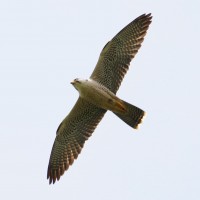Beschreibung
The Asterousia Mountains are not very high (highest peak is Mount Kofinas with 1,231 m.), but access is quite tough because the terrain is very rugged, with many gorges and canyons. Asterousia has warm temperatures, little rainfall and very low vegetation. However, this rocky and dusty landscape, baked by the fierce summer sun, manages to provide refuge to large birds of prey such as Gänsegeier, Bartgeier, Steinadler, Wanderfalke, Lannerfalke and Habichtsadler and another 200 bird species, 112 of which are migratory and found here in spring, summer and autumn. Some of the other interesting birds that can be seen in these mountains are Chukarhuhn, Alpensegler, Kolkrabe, Alpenkrähe, Maskengrasmücke, Weißbart-Grasmücke, Blaumerle, Maurensteinschmätzer, Steinschmätzer and Ortolan.
Details
Zugang
The most impressive track in the Asterousia Mountains is the road to the monastery Koudoumas. The 22 km long road runs from the village of Sternes. Halfway you come across an observation hide with a feeding table for raptors. A good spot to observe birds of prey. Note:: road conditions can be challenging, so take care and drive slow. Carry enough water with you and avoid the hottest times of the day.
